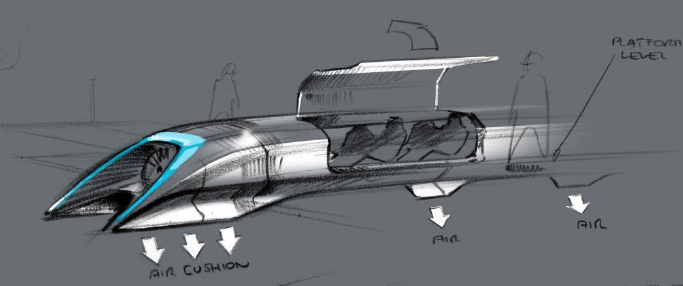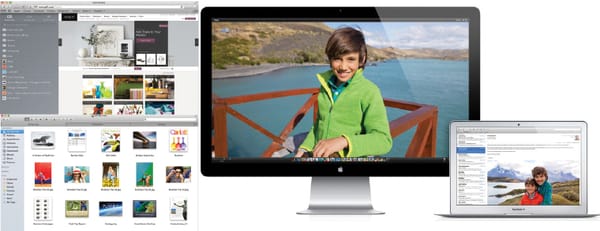The Hyperloop Hypothesis
Fine, it's not a hypothesis, but the Hyperloop concept could revolutionise medium and long distance transport in the blink of an eye...

Los Angeles to San Francisco, a six hour, 382 mile drive along the West coast of the USA. Monotonous and arduous.
Let’s try a better route. Los Angeles to San Francisco by the Hyperloop? 30 minutes of comfort travelling at 760 mph. Sounds impossible? Welcome to the future!
You might be slightly confused by the slightly disjointed start to the article, after all it almost reads like a television commercial. However, with yesterday’s revelation of the Hyperloop the technology world is more than a little excited. After months of speculation and several hints by creator Elon Musk the design of the Hyperloop was revealed last night to the excited public on the SpaceX website.
PayPal co-founder Elon Musk comes from a mixed academic background of Economics and Physics. He is well known for his technological prowess, having since moved on to found electric car company Tesla Motors and space transport company SpaceX, famous for being the world’s first private company to send a craft to the International Space Station.
Musk created the Hyperloop as a solution for medium-distance transport after losing faith in the proposed high-speed rail project designed to provide California with a new mass transit system state-wide. However, as Musk notes in his blog post, not only is the proposed bullet train one of the slowest in the world (with an average speed of 164mph) but it is also one of the most expensive bullet trains per mile of track, worldwide.
The Hyperloop

This Hyperloop is a futuristic take on an old technology, specifically the pneumatic tube. Precisely the Hyperloop concept is a complicated mix of pneumatics and magnetic suspension, powered by solar power. The concept requires a low-pressure environment in the Hyperloop system and uses magnetic suspension and propulsion to move capsules containing passengers.
Since it would be virtually impossible to maintain a vacuum over such a long distance, this low-pressure solution is preferred, however the air present in the tube can cause a problem when the capsules are travelling at high speed. According to Musk, the Kantrowitz Limit represents the top speed of a capsule for a given tube to capsule area ratio, due to the dynamics of the air between the capsule and the tube at high speeds. However Musk believes that the addition of a compressor fan to the nose of the capsule will allow it to easily travel high subsonic speeds. This would be possible because the compressor fan would transfer the air under high pressure at the front of the capsule to a lower pressure area behind the capsule, relieving the pressure in front of the capsule. This solution would also create an air cushion around the capsule, which would contribute to the low friction suspension system.
Is The Hyperloop Viable?
The Californian High-Speed Rail Project, headed by the Californian High-Speed Rail Authority will carry passengers between San Francisco and Los Angeles within 2 hours and 40 minutes, less than half the time it takes to drive the route, but still much longer than Elon Musk’s proposed solution. Phase 1 of the rail project, which connects San Francisco to Los Angeles via Central Valley and Parmdale, has an estimated cost of $68 billion (£44 billion at time of publication) and a projected single ticket price of $105 (£67) which is equivalent to 66% of the price of a return plane journey (during September 2013) and 91% of the cost of a round trip by car (using a 30 mpg vehicle and petrol at $4/gallon).
In comparison Musk’s Hyperloop has been estimated to cost $6 billion (£3.9 billion) to construct, while the price of a single ticket might be as little as $20 (£13). However, the Hyperloop is only a concept and the projected cost might quickly increase with further scrutiny. Additionally, while the high-speed rail project is already underway, the Hyperloop represents a concept that Elon Musk won’t be pursuing any time soon. The wealthy whizz-kid is too immersed in his automotive and space businesses to further develop the Hyperloop, however he has published the thoroughly detailed concept as a paper and has indicated that the concept is open source, allowing anybody to contribute to the concept or even build a Hyperloop.
While the Hyperloop is just a concept, the sheer ingenuity behind the solution and the level of detail considered by Musk means that in a decade or two you might be taking a journey on the Hyperloop to catch your flight into space…








